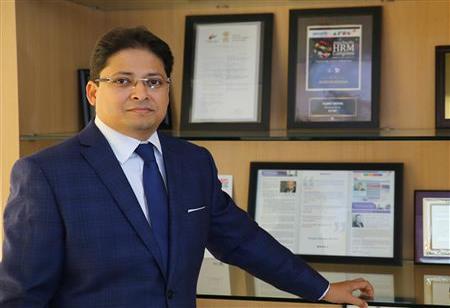By Sumit Mitra, Managing Director,
Central Business Services - BT
 The telecom sector continues to be at the epicentre for growth, innovation, and disruption for virtually any industry. It’s the basic backbone of our society and key in driving the momentum around trends like video streaming, Internet of Things (IoT), and mobile payments. Communications are everywhere.
The telecom sector continues to be at the epicentre for growth, innovation, and disruption for virtually any industry. It’s the basic backbone of our society and key in driving the momentum around trends like video streaming, Internet of Things (IoT), and mobile payments. Communications are everywhere.
And whether you’re uploading your family pictures onto Facebook or tweeting your opinion about politics, you need connectivity. As the demand for mobile connectivity grows, communications providers can take this opportunity to maximise revenue through their core businesses such as network connectivity and the sale of network equipment and devices. Leveraging new products and services that are also enabled by these core capabilities, like IPTV and availability of media content via mobile, are also increasingly important plays.
In recent years the focus has been to drive profitable revenue growth by increasing customer’s share of wallet. However, being able to keep up with customer demand for new offerings, delivered at lightening pace and at competitive prices is tough. There is clearly both a need and a demand for reducing the cost base to fund investments for future innovation.
Reducing Cost Base has been a Bit Hit or Miss
Network optimisation, labour cost reduction through outsourcing, automation and improvement in efficiency are key to reduce the cost base, but are often delivered in a somewhat disjointed or ad-hoc manner. So is the telecoms sector missing out? Missing out on reaping the rewards of a truly global business services model? A model which can act as a catalyst to transform the cost base and inject much needed funds to keep future investment at the pace it needs to be at.
Its clear businesses with vision and imagination have moved beyond tentative steps to improve operational efficiency. Businesses began using shared service centres and outsourcing to improve back-office efficiency more than two decades ago. Finance shared services led the way, followed by IT. The intention was to move routine, transactional work to specialists dedicated to processing it more efficiently at lower cost. This left the business free to be more flexible and focus on its customers. Shared service centres were the in-house solution, while outsourcing firms provided external options.
Over the last 25 years, both shared services and outsourcing have become more sophisticated. Businesses have explored offshoring, scouring the globe for the optimal location and the best providers. They have experimented with hybrid models using both shared services and outsourcing. And they have taken advantage of steadily improving technology, such as procure to pay systems, robotics and artificial intelligence (AI). The results have been impressive, with organizations routinely able to capture improved performance at lower cost from their support functions.
Shared Services Model of the Future
However, it’s now time for the next stage of this evolution: implementing a multifunctional approach to shared services. This is the global business services model.
Global business services operations make it possible for the rest of the company to concentrate its energy on successful and sustainable growth. Companies need a framework where customer-facing business functions can concentrate on delivering value to their customers’ while their day to day operations are managed in a consistent and transparent way.
Today many high-performing companies have abandoned structures defined by narrow business functions led shared services such as finance, Procurement or IT. Instead, they choose to focus on delivering standardized, end-to-end processes. Companies recognize their businesses need more than rigorous attention to cost. This remains vital, of course, but added value, strategic input and analytics are also required. It's no coincidence that top performing companies stand out precisely because they have achieved many of these benefits. The best breed of the business services model is a single global shared services organization operating through regional and global centres. However, the unit is no longer organized on the basis of the functions it serves, concentrating instead on service products. This enables full integration with enterprise processes and complete end-to-end process integration throughout the organisation. Led by a single global business services head reporting into the C-suite, or may be a member of it.
Labour arbitrage is no longer the only game in town. CFOs are increasingly of the view that labour arbitrage is a one off exercise. It’s baked into the forecast. Now, it’s about value generation and improving the customer experience. It’s about driving standardisation, and end to end process re-engineering. And it’s about automation and leveraging the potential of big data to make management decisions based on pro-active business analytics and driving operational efficiency through operational hydraulics.
The business services model brings together people practises, which deliver a single employee experience. This in turn drives reduced churn especially in low cost economies and delivers operational consistency, improving customer experience. The model has the potential to deliver three to five times more financial benefit than labour arbitrage alone.
This is the future.
We use cookies to ensure you get the best experience on our website. Read more...